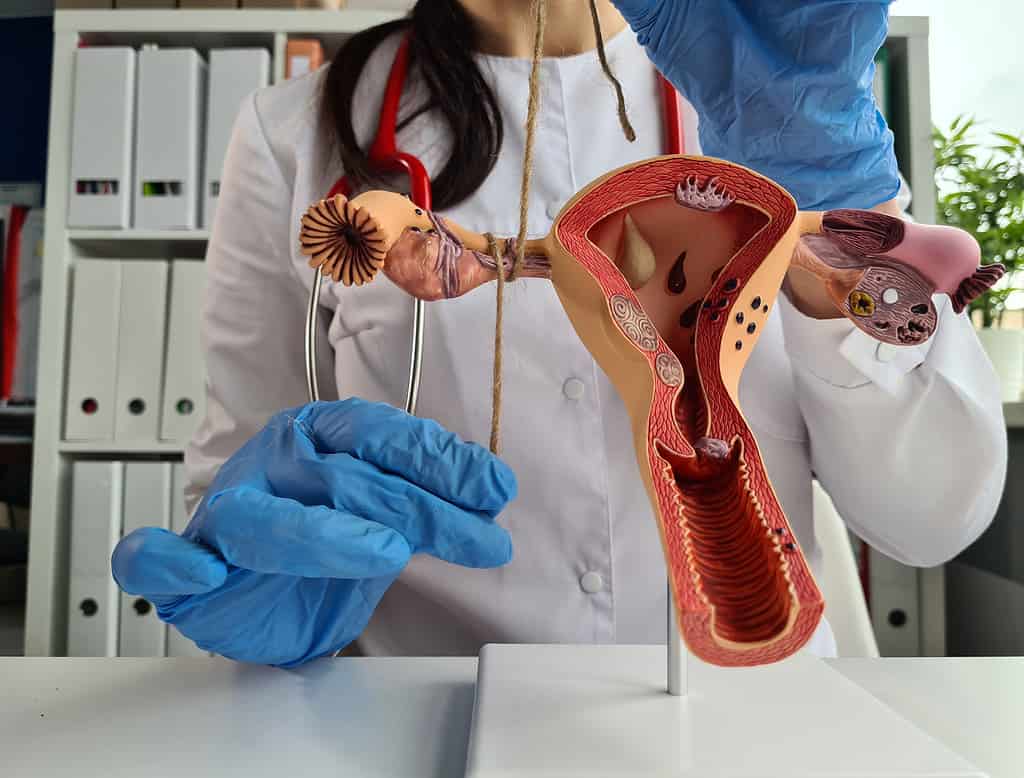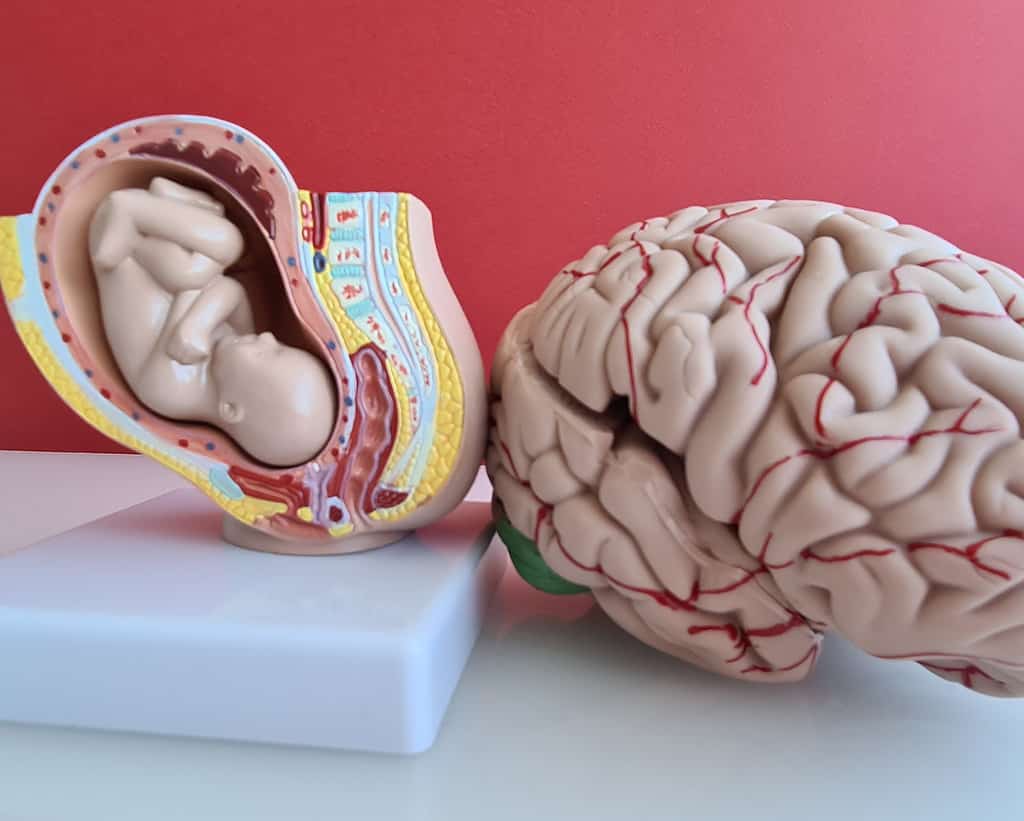A hollow, pear-shaped organ in humans, the uterus is the sexual organ where fetuses (unborn babies) develop and grow into safe delivery status. The organ may also be called the womb.
Summary

Doctor gynecologist ligates fallopian tubes on example of layout female reproductive system. Contraception concept for unwanted pregnancy
©iStock.com/Nadzeya Haroshka
The uterus, or uteri (plural), is an organ in the reproductive system in most female mammals. Humans, cats, dolphins, and dogs, as well as many other mammals, have a fully developed uterus in mature females that accommodate the fetal development of unborn offspring. The uterus is hormone-responsive, contains glands in the lining, and secretes uterine milk for the nourishment of the developing offspring.
Structure and Position of Uteri
Initially, two uteri form in both female and usually male fetus of placental mammals such as humans and cats. During development, the two uteri typically fuse into a single uterus, depending on the species. In most species in which the two uteri do not fuse, one will be functional while the other is not. Humans and other Great Apes typically have fully fused uteri, with rare cases when the fusion does not occur fully, resulting in double-uterine individuals. In these cases, the uteri may rarely both be functional.
In the frontal plane of the pelvic cavity, uteri are usually in the middle, connected to the cervix, which leads to the vagina.
Function of Uteri

Development of the fetus and brain. Embryogenesis and fetal brain anatomy concept
©iStock.com/Nadzeya Haroshka
In humans and other mammals, the function of the uterus is acceptance of fertilized ovum (eggs) and development into birth-readiness of the ovum for the given gestation period. The uterus provides nourishment to and protects the developing fetus during gestation.
The uterus also plays a part in sexual response by directing blood flow to genitals, ovaries, and the pelvis.
Types of Uterus
Four main types of uteri exist typically in mammals.
Simplex Uterus
When the entire uterus is fused into a single organ, this type of uterus is known as a simplex uterus. These are most common in humans, chimpanzees, gorillas, and other Great Apes.
Duplex Uterus
Two whole separate uteri with a singular fallopian tube may occur in some species of mammals. Examples include:
- Opossums
- Rabbits
- Hares
- Kangaroos
- Tasmanian devils
- Guinea pigs
- Mice
Bipartite Uterus
When two uteri share a single cervix, the uterine type is known as a bipartite uterus. These are found in ruminating animals like
- Horses
- Deer
- Cows
- Cats
- Elk
- Moose
Bicornuate Uterus
When the upper parts of the organ remain separate with a fused lower structure, this is known as a bicornuate uterus. These are found commonly in
- Dogs
- Whales
- Dolphins
- Pigs
- Elephants
- Tarsiers
Do All Animals Have Uteri?
Not all animals possess uteri. Not even all mammals posses them. In many cases, animals lay eggs, like birds and reptiles. Instead, many animals have oviducts where eggs are developed and released. Monotremes, for example, are mammals that do not have uteri, but rather oviducts, as they lay eggs. If the animal develops a placenta, the animal has a uterus.
Pronunciation
ˈjuː.təɹ.əs



